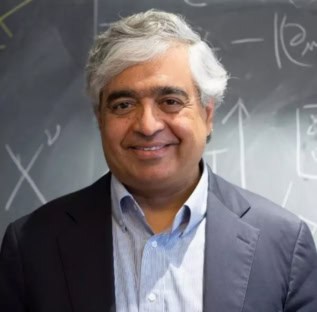With IOP Publishing’s flagship reviews journal – Reports on Progress in Physics – now publishing primary research papers for the first time, a two-day hybrid event is showcasing the hottest new research in condensed-matter physics
When the British physicist Edward Andrade wrote a review paper on the structure of the atom in the first volume of the journal Reports on Progress in Physics (ROPP) in 1934, he faced a problem familiar to anyone seeking to summarize the latest developments in a field. So much exciting research had happened in atomic physics that Andrade was finding it hard to cram everything in. “It is obvious, in view of the appalling number of papers that have appeared,” he wrote, “that only a small fraction can receive reference.”
Review articles are the ideal way to get up to speed with developments and offer a gateway into the scientific literature
Apologizing that “many elegant pieces of work have been deliberately omitted” due to a lack of space, Andrade pleaded that he had “honestly tried to maintain a just balance between the different schools [of thought]”. Nine decades on, Andrade’s struggles will be familiar to anyone has ever tried to write a review paper, especially of a fast-moving area of physics. Readers, however, appreciate the efforts authors put in because review articles are the ideal way to get up to speed with developments and offer a gateway into the scientific literature.
Writing review papers also benefits authors because such articles are usually widely read and cited by other scientists – much more in fact than a paper containing new research findings. As a result, most review journals have an extraordinarily high “impact factor”, which is the yearly mean number of citations received by articles published in the last two years in the journal. ROPP, for example, has an impact factor of 19.0. While there are flaws with using impact factor to judge the quality of a journal, it’s still a well-respected metric in many parts of the world. And who wouldn’t want to appear in a journal with that much influence?
New dawn for ROPP
Celebrating its 90th anniversary this year, ROPP is the flagship journal of IOP Publishing, which also publishes Physics World. As a learned-society publisher, IOP Publishing does not have shareholders, with any financial surplus ploughed back into the Institute of Physics (IOP) to support everyone from physics students to physics teachers. In contrast to journals owned by commercial publishers, therefore, ROPP has the international physics community at its heart.
Over the last nine decades, ROPP has published over 2500 review papers. There have been more than 20 articles by Nobel-prize-winning physicists, including famous figures from the past such as Hans Bethe (stellar evolution), Lawrence Bragg (protein crystallography) and Abdus Salam (field theory). More recently, ROPP has published papers by still-active Nobel laureates including Konstantin Novoselov (2D materials), Ferenc Krausz (attosecond physics) and Isamu Akasaki (blue LEDS) – see the box below for a full list.

But the journal isn’t resting on its laurels. ROPP has recently started accepting articles containing new scientific findings for the first time, with the plan being to publish 150–200 very-high-quality primary-research papers each year. They will be in addition to the usual output of 50 or so review papers, most of which will still be commissioned by ROPP’s active editorial board. IOP Publishing hopes the move will cement the journal’s place at the pinnacle of its publishing portfolio.
“ROPP will continue as before,” says Subir Sachdev, a condensed-matter physicist from Harvard University, who has been editor-in-chief of the journal since 2022. “There’s no change to the review format, but what we’re doing is really more of an expansion. We’re adding a new section containing original research articles.” The journal is also offering an open-access option for the first time, thereby increasing the impact of the work. In addition, authors have the option to submit their papers for “double anonymous” and transparent peer review.
Maintaining high standards
Those two new initiatives – publishing primary research and offering an open-access option – are probably the biggest changes in the journal’s 90-year history. But Sachdev is confident the journal can cope. “Of course, we want to maintain our high standards,” he says. “ROPP has over the years acquired a strong reputation for very-high-quality articles. With the strong editorial board and the support we have from referees, we hope we will be able to maintain that.”
Early signs are promising. Among the first primary-research papers in ROPP are CERN’s measurement of the speed of sound in a quark–gluon plasma (87 077801), a study into flaws in the Earth’s gravitational field (87 078301), and an investigation into whether supersymmetry could be seen in 2D materials (10.1088/1361-6633/ad77f0). A further paper looks into creating an overarching equation of state for liquids based on phonon theory (87 098001).
The idea is to publish a relatively small number of papers but ensure they’re the best of what’s going on in physics and provide a really good cross section of what the physics community is doing
David Gevaux
David Gevaux, ROPP’s chief editor, who is in charge of the day-to-day running of the journal, is pleased with the quality and variety of primary research published so far. “The idea is to publish a relatively small number of papers – no more than 200 max – but ensure they’re the best of what’s going on in physics and provide a really good cross section of what the physics community is doing,” he says. “Our first papers have covered a broad range of physics, from condensed matter to astronomy.”
Another benefit of ROPP only publishing a select number of papers is that each article can have, as Gevaux explains, “a little bit more love” put into it. “Traditionally, publishers were all about printing journals and sending them around the world – it was all about distribution,” he says. “But with the Internet, everything’s immediately available and researchers almost have too many papers to trawl through. As a flagship journal, ROPP gives its published authors extra visibility, potentially through a press release or coverage in Physics World.”
Nobel laureates who have published in ROPP

Since its launch in 1934, Reports on Progress in Physics has published papers by numerous top scientists, including more than 20 current or future Nobel-prize-winning physicists. A selection of those papers written or co-authored by Nobel laureates over the journal’s first 90 years is given chronologically below. For brevity, papers by multiple authors list only the contributing Nobel winner.
Nevill Mott 1938 “Recent theories of the liquid state” (5 46) and 1939 “Reactions in solids” (6 186)
Hans Bethe 1939 “The physics of stellar interiors and stellar evolution” (6 1)
Max Born 1942 “Theoretical investigations on the relation between crystal dynamics and x-ray scattering” (9 294)
Martin Ryle 1950 “Radio astronomy” (13 184)
Willis Lamb 1951 “Anomalous fine structure of hydrogen and singly ionized helium” (14 19)
Abdus Salam 1955 “A survey of field theory” (18 423)
Alexei Abrikosov 1959 “The theory of a fermi liquid” (22 329)
David Thouless 1964 “Green functions in low-energy nuclear physics” (27 53)
Lawrence Bragg 1965 “First stages in the x-ray analysis of proteins” (28 1)
Melvin Schwartz 1965 “Neutrino physics” (28 61)
Pierre-Gilles de Gennes 1969 “Some conformation problems for long macromolecules” (32 187)
David Gabor 1969 “Progress in holography” (32 395)
John Clauser 1978 “Bell’s theorem. Experimental tests and implications” (41 1881)
Norman Ramsey 1982 “Electric-dipole moments of elementary particles” (45 95)
Martin Perl 1992 “The tau lepton” (55 653)
Charles Townes 1994 “The nucleus of our galaxy” (57 417)
Pierre Agostini 2004 “The physics of attosecond light pulses” (67 813)
Takaaki Kajita 2006 “Discovery of neutrino oscillations” (69 1607)
Konstantin Novoselov 2011 “New directions in science and technology: two-dimensional crystals” (7 082501)
John Michael Kosterlitz 2016 “Physics: a review of key issues” (2016 79 026001)
Anthony Leggett 2016 “Liquid helium-3: a strongly correlated but well understood Fermi liquid” (79 054501)
Ferenc Krausz 2017 “Attosecond physics at the nanoscale” (80 054401)
Isamu Akasaki 2018 “GaN-based vertical-cavity surface-emitting lasers with AlInN/GaN distributed Bragg reflectors” (82 012502)
An event for the community
As another reminder of its place in the physics community, ROPP is hosting a two-day event at the IOP’s headquarters in London and online. Taking place on 9–10 October 2024, the hybrid event will present the latest cutting-edge condensed-matter research, from fundamental work to applications in superconductivity, topological insulators, superfluids, spintronics and beyond. Confirmed speakers at Progress in Physics 2024 include Piers Coleman (Rutgers University), Susannah Speller (University of Oxford), Nandini Trivedi (Ohio State University) and many more.

“We’re taking the journal out into the community,” says Gevaux. “IOP Publishing is very heavily associated with the IOP and of course the IOP has a large membership of physicists in the UK, Ireland and beyond. With the meeting, the idea is to bring that community and the journal together. This first meeting will focus on condensed-matter physics, with some of the ROPP board members giving plenary talks along with lectures from invited, external scientists and a poster session too.”
Longer-term, IOP Publishing plans to put ROPP at the top of a wider series of journals under the “Progress in” brand. The first of those journals is Progress in Energy, which was launched in 2019 and – like ROPP – has now also expanded its remit to included primary- research papers. Other, similar spin-off journals in different topic areas will be launched over the next few years, giving IOP Publishing what it hopes is a series of journals to match the best in the world.
For Sachdev, publishing with ROPP is all about having “the stamp of approval” from the academic community. “So if you think your field is now reached a point where a scholarly assessment of recent advances is called for, then please consider ROPP,” he says. “We have a very strong editorial board to help you produce a high-quality, impactful article, now with the option of open access and publishing really high-quality primary research papers too.”
- Click here to register for the Progress in Physics 2024: Condensed Matter meeting, which takes place on 9–10 October 2024 online and in person at the Institute of Physics in London, UK





